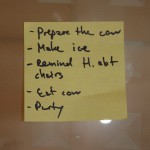 RSS FEED
RSS FEED
Posts Tagged ‘relaxation practice’
How Do you Relax? (Is it Relaxing you?)
April 8th, 2009
I really do want to know. I’m very curious about this phenomenon – we seem to be so drawn to things that  are fun, or enjoyable, or give us some kind of gratification, but don’t actually relax us. For instance (when in doubt, I’ll always tell one on myself) I am very drawn to playing Snood – a computer game that involves shooting down these silly faces with matching faces – lots of eye-hand coordination, speed, a danger-bar that raises the stress level, electronic music and noises, bright colors on a computer screen – Migraine hell, yes? Why would I want to do that? Is it relaxing? No! Fun? Yes!
are fun, or enjoyable, or give us some kind of gratification, but don’t actually relax us. For instance (when in doubt, I’ll always tell one on myself) I am very drawn to playing Snood – a computer game that involves shooting down these silly faces with matching faces – lots of eye-hand coordination, speed, a danger-bar that raises the stress level, electronic music and noises, bright colors on a computer screen – Migraine hell, yes? Why would I want to do that? Is it relaxing? No! Fun? Yes!
Some people like roller coasters. Gut-wrenching fear. The sense you are about to die. The sensation of your heart about to burst from your chest (not really my cup of tea…). Is that relaxing? That’s a different issue, really. The endorphins your body releases after the ride, when it realizes you have survived, are probably what keeps you coming back. The endorphin rush is very sweet. But is it relaxing?
Now – a walk in the woods. A swim in the ocean, or a lake. A long gentle bike ride. Rocking on a porch swing on a breezy day. Meditating. Yoga. Deep breathing. Guided visualization. A really good laugh. A great talk with a friend. Loving and satisfying sex. A massage. A hot bath. Clearing your mind and practicing letting go. These things truly are relaxing.
When I am working, whether I am writing here on this site, creating more classes for you, working with coaching clients, or doing legal work, I enjoy what I am doing, and I can get into a zone where I just keep rolling and I don’t want to stop. I’ve learned to recognize when I need a break, and I know how important it is to relax. But I will tell you right here and now, it is not easy, even for me. It’s hard to break away. When we’re on a roll, we want to keep rolling. When we’re on the computer, we want to stay on the computer. But what our nervous systems need is for us to shift, to take a break, to practice relaxation.
Deliberate relaxation practice at least three times a week (preferably five) can reduce your Migraine triggerability. How does that work? You will be exercising your parasympathetic nervous system – strengthening your relaxation response. You develop your ability to relax, to release stress, turn off the pressure valve. Deep breathing and guided visualization are two great methods, and I use them in the BREESE relaxation teleclasses. There’s more about the relaxation response in the Free my Brain Migraine Management Newsletter coming out this week, and if you’re not already receiving the newsletter you can sign up for it in the Six Migraine Keys box in the upper right corner of the page.
But I want you to know – I do my relaxation practice, as regularly as I can, and I take breaks and breathe, and take little walks, and do all those things I know I should, but it’s hard! And I still like to do things that are fun, but not particularly relaxing. I’m lucky – I get to lead relaxation classes, so I get a chance to relax with all of you. What do you do to relax?
– Megan
Porch swing image courtesy of Elvissa.
Tags: relaxation practice, relaxation techniques
Posted in Managing, Tips & Techniques | Comments (3)
Running on Fumes
March 14th, 2009
 A while back I wrote a… um… post (rant?) about how stress is not a Migraine trigger (officially) but… why does it seem that way to us so frequently? The International Headache Society calls stress an aggravating factor, in other words, it’s not considered a trigger, but a factor that can make us more susceptible to our triggers, perhaps lower our threshold to be triggered into a Migraine. As far as I’m concerned, the jury is still out on this question. Given that hormonal fluctuations are one of the biggest triggering factors, (such as the hormonal fluctuations that give women menstrual Migraines and increases or decreases in Migraines around menopause), and given that our bodies react to and cope with stress by release of stress hormones (cortisol and epinephrine, among others), I’m betting research will eventually show that changes in stress hormone levels play a role in triggering Migraine attacks.
A while back I wrote a… um… post (rant?) about how stress is not a Migraine trigger (officially) but… why does it seem that way to us so frequently? The International Headache Society calls stress an aggravating factor, in other words, it’s not considered a trigger, but a factor that can make us more susceptible to our triggers, perhaps lower our threshold to be triggered into a Migraine. As far as I’m concerned, the jury is still out on this question. Given that hormonal fluctuations are one of the biggest triggering factors, (such as the hormonal fluctuations that give women menstrual Migraines and increases or decreases in Migraines around menopause), and given that our bodies react to and cope with stress by release of stress hormones (cortisol and epinephrine, among others), I’m betting research will eventually show that changes in stress hormone levels play a role in triggering Migraine attacks.
I’ve spoken with Teri Robert, author of Living Well with Migraine Disease and Headaches, about this topic. Teri makes several good points – the level of stress in our lives may be largely out of our control, while individual triggers may be in our control. Therefore if we focus on stress, we may be focusing on something we can do little about, rather than on something we can change. And, if we blame stress we may be missing other triggers that being stressed makes us forget. Do you sleep well, or enough, when you are stressed? Do you eat well, regularly, or enough? Do you overdo it on caffeine?
As so often happens, I had a chance recently to be my own guinea pig for these speculations. I was given a rush project to complete over a weekend, and my world became all about getting it done. It took me back to college, law school, and my early days as a lawyer, when a project could take over everything, and sleep, food, everything else would go on the back burner. It’s not a mode of operations I have used much in the past decade, and clearly not one that is good for me, but boy was it familiar!
On the second day of the project I woke up early after not enough sleep, my head full of the research I had to do. I whizzed through getting my son off to school, and whatever I had to do of my morning routine, and was at my desk and deeply immersed in legal research before nine in the morning. I was alert, turned on, and my mind was moving fast. I was drinking more coffee than I usually do, and I noticed I had little appetite, and less tolerance for taking the time to eat, or rest. I don’t know exactly when I noticed, but I could see it coming. I was definitely pushing myself beyond normal endurance limits, and I could actually feel the point where the stress hormones took over. When I was 25, I could run like that for several days without triggering a Migraine. Now I could feel the lurking heaviness around the margins of my mind, crowding right in on the heels of my adrenaline high. I caught myself before I lost much sleep, or skipped many meals, or propped myself up on much more caffeine than usual. I forced myself to stop and rest, and although I couldn’t nap with all that caffeine in my system, I did lay down and do relaxation exercises, and I did manage to avoid the Migraine I felt threatening. My hat is off to Teri for good practical advice, because if I was busy blaming the stress, I could not have attended to the triggers in this way.
I realize I’m not telling you a tale of a Migraine, but of a Migraine averted, and that’s good news. That’s actually another post, for another day, and I’ve written others on the theme – you can push those triggers back at times, and stopping and relaxing can do it. That’s why I offer relaxation teleclasses and recordings! But if I hadn’t been so aware, and hadn’t had that tool; if my Migraines weren’t managed to the degree they are, I would have had a Migraine that day. In fact, I had one at the end of the project, three days later!
So, was the stress itself a trigger, one in the stack, with the lack of sleep, insufficient food, and excess caffeine? Was the stress an exacerbating factor that made me more vulnerable to the effects of the other three triggers? Or was the stress the producer of the stupidity that made me willfully expose myself to those triggers, the very things I so carefully manage my life to avoid? What do you think?
– Megan
Dashboard image courtesy of Winstonavich/Winston.
Tags: International Headache Society, Migraine management, Migraine triggers, relaxation practice, stress management, Teri Robert
Posted in Managing | Comments (4)
Calming down the migraine brain
February 20th, 2008
Several people have asked me lately about relaxation techniques. If stress is our enemy, we need to relax, yes? But if we strive and worry about whether we’re relaxing, we tense up. Raise your hand if this applies to you. My hand is up. Luckily there are some very simple techniques you can use to begin to practice relaxation.
relax, yes? But if we strive and worry about whether we’re relaxing, we tense up. Raise your hand if this applies to you. My hand is up. Luckily there are some very simple techniques you can use to begin to practice relaxation.
Relaxing is not the same as doing fun things – fun things may or may not be relaxing. When I had my first job out of college I used to go to the video parlor on my lunch hour and play PacMan (yes, I am that old). I would return to work with my wrists and hands asleep, so stressed out I could
barely cope. I learned eventually that video games are not relaxing for me!
Our nervous systems have two components – the sympathetic and the parasympathetic. The sympathetic
 nervous system controls stress – this is where our flight or fight response comes from. The parasympathetic nervous system controls relaxation, which is often neglected in a busy twenty-first century life. We can build the tone of our parasympathetic nervous system in many ways, including through deep breathing, meditation, moderate exercise, yoga and movement, stretching, reading a good book, having an enjoyable conversation, playing with children or animals, being out in nature, loving touch or sexual contact. If we take some time to strengthen our relaxation “muscles” daily, we improve our ability to handle stress. According to Dr. Ian Livingstone, studies showed a 40% reduction in migraines in those practicing regular relaxation.
nervous system controls stress – this is where our flight or fight response comes from. The parasympathetic nervous system controls relaxation, which is often neglected in a busy twenty-first century life. We can build the tone of our parasympathetic nervous system in many ways, including through deep breathing, meditation, moderate exercise, yoga and movement, stretching, reading a good book, having an enjoyable conversation, playing with children or animals, being out in nature, loving touch or sexual contact. If we take some time to strengthen our relaxation “muscles” daily, we improve our ability to handle stress. According to Dr. Ian Livingstone, studies showed a 40% reduction in migraines in those practicing regular relaxation.
So here are a few ways to get started:
- Sit comfortably with your back supported, legs uncrossed, hands on your knees. Close your eyes. Breathe in deeply through your nose, for a slow count of three. As you inhale, allow your abdomen to inflate like a balloon. Then breathe out through your mouth for a count of five, gently pulling in your abdominal muscles as you exhale. Gently concentrate on your breathing. If you find yourself thinking of other things, don’t get upset with yourself. Gently remind yourself to focus on your breathing. Try doing this for five minutes at first. Each day you can increase the time.
- Lie on your back, legs uncrossed, arms resting comfortably at your sides. Bring your awareness to your feet. Notice how they feel, any discomfort. As you breathe in, imagine silver light being pulled with your breath into the soles of your feet. If there is any pain or discomfort in your feet, imagine that you are exhaling it out as you breathe. Next notice your ankles. Breathe in and pull the silver light up into your ankles. Breathe out any pain or discomfort. Continue to gently pull the silver light up through your body, being aware of each part of the body in turn and blowing pain or discomfort out with your breath. If pain still remains, don’t fight it or worry about it. Just keep breathing the light into your body and exhaling out the pain. Continue until your body is glowing from head to toe. You may want to do this in bed to help you fall asleep.
- Take a walk and practice keeping your awareness in your body as you walk – the way your muscles feel when they move, the way your feet hit the ground. Be aware of the
 rhythm of your breath and
rhythm of your breath and
the rhythm of your walking. Look at any trees or plants, any living things or natural features you pass – fully observe them as you pass. If you find your mind getting busy, working or worrying at anything, gently return your attention to your body and to the trees, ground, plants, rocks or sky. If you are walking in the city be aware of the sky, the wind, any elements of the natural world.
Give these techniques a try and let me know what you think!
– Megan Oltman
Not trying to be stressless, but to stress less!
Tags: Migraine management, relaxation practice, relaxation techniques
Posted in Managing, Tips & Techniques | Comments (2)
“Breaking the Headache Cycle”
February 18th, 2008
Breaking the Headache Cycle by Ian Livingstone, M.D. and Donna Novak, R.N.
When my migraine pattern suddenly shifted from once month or less to three to four times per week, I  went to see Dr. Livingstone. When I first saw him in August of 2004, it was six months after I had two episodes of anaphylactic shock, caused by ibuprofen. I was a little gun-shy of trying new medications. I did agree to try Imitrex – I needed to be able to abort my attacks. But instead of preventive medications, Dr. Livingstone suggested that I get into a regular relaxation routine – using deep breathing, meditation and
went to see Dr. Livingstone. When I first saw him in August of 2004, it was six months after I had two episodes of anaphylactic shock, caused by ibuprofen. I was a little gun-shy of trying new medications. I did agree to try Imitrex – I needed to be able to abort my attacks. But instead of preventive medications, Dr. Livingstone suggested that I get into a regular relaxation routine – using deep breathing, meditation and
guided imagery to strengthen my nervous system’s relaxation response.
I first read the book at that time: Breaking the Headache Cycle: A Proven Program for Treating and Preventing Recurring Headaches. I took on practicing meditation daily, and after about six months I found my migraines reduced to 2 or 3 per month. The methods outlined in the book were very effective for me, in combination with the migraine abortive, to reduce my migraines to a manageable level.
The authors say migraineurs’ nervous systems are “very reactive to any change, even good change. This
sensitivity is the hallmark of the migraine condition. Unless it is understood and recognized, the migraine disorder cannot be adequately treated.”
If our nervous systems are over-responsive, it makes sense that relaxation and meditation will calm down the responsiveness of the nervous system. Dr. Livingstone cites studies showing that preventive medications reduce migraine about 40% on average (the book was published in 2003 – there may be more up to date statistics on this); and other studies showing that a regular relaxation practice reduces migraines 40% on average. Is it a safe bet to say if doing both, we might reduce migraine 80%? That’s a number I could be very happy with!
down the responsiveness of the nervous system. Dr. Livingstone cites studies showing that preventive medications reduce migraine about 40% on average (the book was published in 2003 – there may be more up to date statistics on this); and other studies showing that a regular relaxation practice reduces migraines 40% on average. Is it a safe bet to say if doing both, we might reduce migraine 80%? That’s a number I could be very happy with!
Many times I pause and do deep breathing when I first feel pain in my head, or even just when I feel my tension mount. This often down-shifts me from a budding migraine back to a state of no head pain. I have come to be able to notice when I am getting too excited or too engaged – it’s not just negative 
stress that can trigger me! Not surprisingly, when I got out of the habit of practicing regular relaxation, my migraines increased again. As tricky as
it is to remember to take a variety of medications, in the right amounts, at
the right times, I think it is even more challenging to establish and keep a
routine of putting the busy concerns of life aside and take time out to look
inward, breathe deep, become aware of the body, calm oneself, and relax.
I came to these methods already convinced – I was not a stranger to yoga, meditation and relaxation. I had practiced yoga in many periods in my life, starting in my teens, and meditation and guided imagery from my early twenties. Later, as a life and business coach, I have used meditation and guided imagery with my clients to help them get clear about issues that were stopping them, and to visualize what they wanted in their lives. So I wasn’t surprised that this practice would aid with migraine disease as well. The challenge is
keeping it in my life as all the demands of life crowd in. The reward is getting to know my own system
really well, and gaining at least a little bit of control over it.
By the way, I think preventive medication is a great thing, and many migraineurs find a lot of success with it. I may be headed down that path myself, as my migraine pattern has changed and my treatment will need to change too. But I’ll always keep relaxation as part of my routine. It makes me feel good!
– Megan Oltman
Nothing to gain from pain!
Tags: Breaking the Headache Cycle, Ian Livingstone MD, Migraine attack, Migraine preventive medication, reactive nervous system, relaxation practice
Posted in Books, Managing, Medicine, Tips & Techniques | Comments (2)
It’s Not Me, it’s the Migraine Talking
February 10th, 2008
 I have been back on track with practicing my relaxation routine this past week and I was going to write you a nice inspiring post about that. I was on a 13 day migraine free run and feeling pretty good about it. Yesterday the beast sank its claws in again and hasn’t let go yet. I feel like all the inspiration has been sucked right out of me. But that’s just the migraine talking.
I have been back on track with practicing my relaxation routine this past week and I was going to write you a nice inspiring post about that. I was on a 13 day migraine free run and feeling pretty good about it. Yesterday the beast sank its claws in again and hasn’t let go yet. I feel like all the inspiration has been sucked right out of me. But that’s just the migraine talking.
I resent the arrival of a migraine on the weekend, stealing my weekend time away. On the other had there’s less anxiety with a weekend migraine as I am not missing work – not missing things crucial to my livelihood. Just missing my down time, my marriage time, my family time, my fun time, my get the house in order time. Well, I guess I’m not missing down time, actually, because I am down!
Lying around. Watching tv, reading when I can stand the light, hanging out on line, drinking lots of cups of tea my sweetie brings, enjoying the comfort of my bed, receiving periodic visits from the family, with hugs and snippets of conversation. It’s not really all that bad, for down time. That was me talking.
Then I can’t stand the inactivity any more. I decide to sit up and be okay, and I start folding laundry or some such ridiculously strenuous task. The pounding returns and the nausea starts back up. Danny comes in to watch a movie with me and we try to talk about plans for next weekend, and it strikes me what I am missing, how uncertain my life is. And I start to cry. Knowing that crying can make the migraine worse, I try to stop myself. I remember how accepting I have been in the past month, and I start beating myself up for not being accepting right now. That’s the migraine talking!
Serotonin levels drop during migraine attack. I imagine the migraine slurping up my serotonin. So of course I’m going to feel unhappy. Aside from the pain itself, which is not happiness inducing, it’s hard to feel happy without serotonin. So I use what I can to comfort myself – hugs and tea and toast with honey, dark chocolate (when the stomach can stand it) and gentle movies, puzzles and pillows and good books. If I can concentrate at all, I come and write to you here, and that helps me remember who I am, that I am not the migraine, that it is what it is, that this too shall pass.
course I’m going to feel unhappy. Aside from the pain itself, which is not happiness inducing, it’s hard to feel happy without serotonin. So I use what I can to comfort myself – hugs and tea and toast with honey, dark chocolate (when the stomach can stand it) and gentle movies, puzzles and pillows and good books. If I can concentrate at all, I come and write to you here, and that helps me remember who I am, that I am not the migraine, that it is what it is, that this too shall pass.
– Megan Oltman
Moderate migraine, day 2, hoping for relief soon
Oh, yes that’s Arizona again – Spider Woman Rock in Canyon de Chelly. I didn’t have a migraine for that part. Down below is New Mexico – the sunset over Albuquerque from Sandia Peak.
Tags: depression, relaxation practice, serotonin, weekend migraine
Posted in Communicating, Managing, Musings | Comments (2)
Living Healthy to end the Brain Drain
January 22nd, 2008
Here’s the view down the lane from me this morning – I took a chilly walk with Kimi. Snow is coming in a little while. I did all the things I should this morning, stretched, meditated, ate a light healthy breakfast, took my supplements and meds, stayed calm. Planned my day, did some work, took a walk. A morning of living healthy. (Go ahead, give me a gold star!) I’ll do that a few times and then I’ll think I don’t have to any more. Anyone else out there like me?
little while. I did all the things I should this morning, stretched, meditated, ate a light healthy breakfast, took my supplements and meds, stayed calm. Planned my day, did some work, took a walk. A morning of living healthy. (Go ahead, give me a gold star!) I’ll do that a few times and then I’ll think I don’t have to any more. Anyone else out there like me?
I’ve been thinking about what it takes to live healthy. Like everyone, I’ve been secretly hoping for the magic pill. Where do we get that fantasy from? Is it from fairy tales, a constant wish for the magic wand that banishes all ills, or the knight on the white horse to take us away, or is it pharmaceutical commercials (potential side-effects include loss of common sense, temporary irresponsibility…)?
 But wouldn’t it be nice? Just give me the magic pill (once, mind you, I’m not interested in something I have to do every day, or refill prescriptions for, or pay co-pays ad nauseum…) and then I can live like everybody else.
But wouldn’t it be nice? Just give me the magic pill (once, mind you, I’m not interested in something I have to do every day, or refill prescriptions for, or pay co-pays ad nauseum…) and then I can live like everybody else.
Oh, like everybody else, huh? What does my fantasy mean by that? Hmm well I imagine everybody else can stay up as late as they want, as often as they want. They can eat sugar without getting hooked on it. They can drink coffee without revving their systems up so much they get migraines. They can live without exercise. They can drink alcohol. They can be around cigarette smoke. They stay calm cool and collected. They certainly never ever have to meditate, or breathe deep, or stretch. They don’t have to go to the chiropractor every two weeks, they never need a nap, they have abundant energy all day, their houses are tidy and clean… How much of the human race have I eliminated by now? I guess there may be one or two paragons like this somewhere, but I know I haven’t met many! Funny thing is, to live healthy with my conditions, mostly I have to do what common wisdom and the medical profession tells us we all need to be doing. The main difference seems to be: for those of us with chronic illness, the breakdown comes faster. We don’t have to wait 30 years for the heart attack – we get the migraine attack right now!
Living healthy with migraine disease, and chronic fatigue, and a chronic sinus condition, seasonal allergies, allergies to pain meds, and irritable bowel syndrome, hypothyroidism, periodic anxiety and depression, looks like this for me:
1) regular and sufficient sleep
2) a diet high in fiber, organic foods, fruits and vegetables, and low in dairy, refined sugar and flour and food additives
3) vitamins, minerals and nutritional supplements
4) thyroid supplements
5) natural, bio-identical hormone replacement therapy
6) antihistamines
7) a humidified house
8) flushing my sinuses with a neti pot a couple of times a week
9) triptans for migraine attacks
10) daily stretching
11) daily meditation and relaxation practice
12) journaling
13) keeping a detailed wellness diary
14) regular exercise – at least 5 times a week
15) chiropractic visits every other week
16) a life coach to help me stay on track
17) keeping in touch with my medical team about what’s working, what’s changing, what’s next
18) keeping a regular work schedule and managing my time and projects to keep my anxiety level low
19) other stuff I can’t think of at the moment…
If I do all this, I am less likely to get a migraine. I am less likely to catch every cold that comes down the pike and turn it into a sinus infection. I am unlikely to have an ibs flare-up and I don’t fatigue easily and I feel serene… and then I think I’m cured. I think somewhere in all that was a magic pill and I can have a great big cup of coffee with a cheese danish and stay up half the night and work without breaks… until the migraine slams me down again.
Or even worse, I get sick anyway, even though I did everything right, or nearly everything right, and then I think, what’s the use of working so hard to stay healthy?
So, here’s my commitment: One day at a time, I will live healthy. I will do it for the rest of  today. Tomorrow all bets are off… (just kidding!)
today. Tomorrow all bets are off… (just kidding!)
Oh, it just started snowing!
– Megan Oltman
Live well and prosper!
pill image courtesy of [O*] ‘BharaT
checklist courtesy of Jon-Eric Melsaeter
snowflakes courtesy of Lin Pernille
Tags: managing life with migraine, one day at a time, relaxation practice, self care, vitamins
Posted in Managing, Tips & Techniques | Comments (2)
That disclaimer thing...
Remember: nothing we do here is medical advice or treatment or is a substitute for medical advice or treatment. Get competent medical advice to learn more about your migraines, possible treatments and risks.
What's New on Migraine Support Group Coaching |
Recent Comments
- on Calling all Redheaded Migraineurs
- on No, You’re not Crazy, You just Have Migraines
- on No, You’re not Crazy, You just Have Migraines